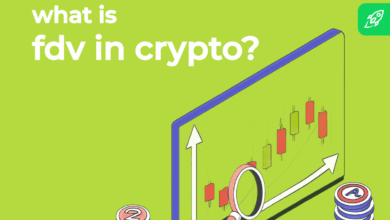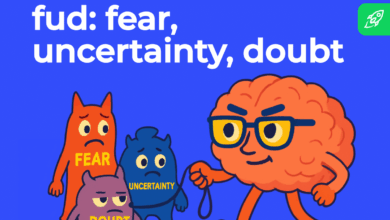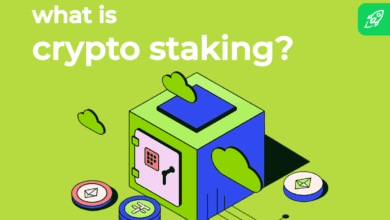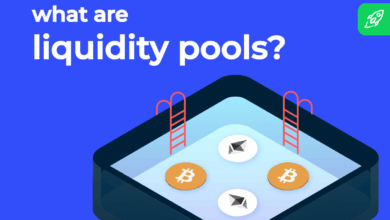NFT Royalties: Are They Going Away?

Back in 2021, the NFT talk in the art scene was focused on royalties and how it aided in leveling up many aspects of modern industries. The standout feature of non-fungible tokens (NFTs) was praised for empowering artists, bringing to the table a new revenue stream, along with the ability to escape cut-throat contracts that left many of them financially wounded.
Royalty payments can be defined as monetary payments made from one party to another for an ongoing use of assets with terms defined under a certain contract. The expression is commonly associated with intellectual property rights and mainly with the music industry. Artists allow their music to be played on the radio, sampled, or streamed in exchange for a fee. There are a bunch of other artists who receive royalty fees as well, such as publishers, novelists, and songwriters. We have talked already about the NFT boom in the music industry, and how many musicians started to capitalise these tokens at a rapid pace and getting highly paid for their assets on the secondary market.
To fully understand NFT royalty payments and the boom they caused among many creators worldwide, we have to become familiar with the system that existed long before the introduction of the NFT market and its underlying business models. The traditional system for creator royalties has been haunted by a number of issues for a long time, namely since its early days. Artists needed frequently to deal with problems such as contention over assets’ ownership, delayed payments, and corruption. Having the middle-man present at all times in the music industry, artists were forced to say yes to deals that stripped them off financially. It was how it was done and the options were quite limited.
The flawed system didn’t welcome the digital revolution with open arms, but as we all know innovation cannot be stopped easily. Artists learnt fast about the NFT technology, and whenever an artist created, namely minted, an NFT, he or she was able to set desired terms within the smart contract. In other words, as long as the NFT is able to be traded, original terms of the self-executing contract apply, and the artist gets money. This opened up a whole new problem for the traditional middle-man in the longstanding music industry, even greater than the risk posed by services such as Spotify. The music marketplace introduced low barriers to entry for creators so every artist in the world was able to tokenize his or her music and sell it. As long as you had what it takes to succeed in the marketplace, you could get paid.
To sum it up, NFT creators can earn primarily from primary sales and ongoing royalty payments from secondary transaction payments. Set as fixed percentages depending on the royalty rate set by the creator, NFT royalty payments represented an innovative way and a new monetization and business model. The average non-fungible token royalty fee typically ranged from 5% to 10%, depending on the creator’s own choice of their royalty percentage.
To lay down some statistics, NFT creators typically generated 92% from primary sales in contrast to a bit smaller percentage, namely 88%, on secondary markets. Hence, primary sales remained the broadest generator of an artist’s income. Even with that being the case,, the underlying importance of NFT royalty payments became clear to the whole industry.
With 2021 being the year of empowering artists, the end of 2022 brought a new trend to the table; the elimination of creator royalties among broad digital collection marketplaces. Many artists didn’t react well to the recent news by stating that not paying royalties is merely theft due to the fundamental nature of artist royalties that keeps the creative cycle going.
The growing trend within the industry started with the Ethereum-based NFT exchange platform Sudoswap which opened up the discussion challenging the core concept of NFT creator royalties. The platform in question was the first one to introduce an automated market maker to remove royalty payments on secondary transactions entirely. Sudoswap made that move in July 2022 by offering NFT trading with platform fees of only 0.5%. For the sake of comparison, Open Sea provides a transaction fee of 2.5%, along with the enforcement of creator royalties pushing the total amount to 10%. In particular, Sudoswap went from a short debate to a new reality in no time and decided to offer royalty-free alternatives to sellers and purchasers. In only a month, Sudoswap’s total value locked went from $300k to $3.5 million. Such rapid gains forced the platform’s competitors to adapt.
Shortly after Sudoswap, the growing trend spread among the NFT space with the sole purpose to eliminate creator royalties within the broad NFT marketplace, collections, and multiple platforms. The most successful Solana project up to date, DeGods, along with its associated collections, announced the removal of creator royalties from secondary transactions across three collections, specifying a drop in royalties from 9.99% to 0%. DeGods’ early announcement rapidly faced mixed opinions as some claimed it was a financial suicide while others thought it was time to introduce novel business models. However, DeGods didn’t provide many explanations for the royalties change and shortly stated that it was the best business decision at the moment as they are taking on a new approach.
Following Sudoswap and DeGods, the leading Solana NFT marketplace Magic Eden, a platform with a 77% market share by trading volume, officially announced that the marketplace won’t enforce royalties any longer, and offered the possibility of optional royalty payments on the platform. In other words, secondary buyers of non-fungible tokens can choose whether to pay royalties to the artist. It all came down in a very short period of time and with a lot of coincidences. For example, Solana’s official announcement came only a month after Magic Eden introduced MetaShield, a tool with the ability to identify NFTs listed and traded on marketplaces that usually bypass creator royalties. Other Solana NFT marketplaces, such as Yawww and Solanart, have also decided to push forward the anti-royalty trend and introduce new business models.
Magic Eden was the last major domino to fall when it made the announcement that creator royalties would no longer be obligatory. Present-day, nearly every Solana NFT marketplace that holds a significant share of the market has either rejected royalty payments or made them optional. Therefore, traders on Solana don’t have to pay any longer a sum between 5% and 10% in royalty fees on each trade. This hurts creators and all types of artists, but it has a huge potential to enhance profit margins for sellers. On the contrary, the largest NFT marketplace OpenSea still didn’t make such announcements and continued to honour royalties. Namely, the Ethereum-based market even now didn’t start with the race to the bottom on royalty fees as in the Solana and other marketplaces’ situation. On the other hand, another NFT marketplace, Blur, has offered a compromise. The platform decided to take on a business model of not enforcing royalty payments but still rewarding those who do that with the platform’s native token.
Taking into account the ongoing crypto bear market, the change in the NFT space doesn’t seem so peculiar. The expression bear market was borrowed from traditional finance to describe a period during which the prices of securities sustain prolonged price decreases of 20% or more from recent highs. Bear markets, along with bull markets, are normal occurrences in traditional finance, namely ordinary parts of any economic cycle. However, the debate over royalties has been raging for months among platforms, artists, and collectors, but the sudden cut still left the NFT community in awe. Most marketplaces noted that such announcements came after difficult reflection and debates with many interested parties due to the fact that the market has been broadly shifting towards optional creator royalties for a while now.
How would optional royalty payments work?
After the sudden chaos, we all want to know what happens next and the answer to the question of whether NFT royalties are going away. For the time being, royalties are still here, but many things are going to be different. The market fluctuations temporarily changed the fate of NFT royalties.
Most platforms kept the possibility of optional royalty payments. The mechanism in question can be best described using the Magic Eden example. The Magic Eden NFT marketplace introduced optional royalty payments and removed the 2% platform fee. To somehow support creators, the platform launched the Creator Monetization Hackathon worth one million dollars. The platform in question tends to keep on working with creators to find a suitable solution to enforce the collection of royalties while also taking into consideration alternative manners of monetizing copyrighted works and opening up new revenue streams. Magic Eden practically announced that it is going to review its marketplace fee structure and try to find a better solution for the future.
As for now, the platform brought to the table a new feature where the decision on how much royalties to pay will be passed to the buyer. Namely, purchasers can choose to set royalties in multiple ways, and how they would prefer to honour the royalties of each non-fungible token, and sellers will get the exact price point they list their NFTs.
The optional royalty model of payments has been called out as controversial, along with Magic Eden’s announcement to make things right when the market conditions get better. The backlash is not out of the ordinary since royalty payments have been a substantial part of the ecosystem. The NFT community heavily criticised the announcements to eliminate such royalties taking into account this would affect many artists worldwide who decided to sell NFTs to gain new revenue streams. A community that was pro royalties couldn’t welcome such announcements with open arms. However, the market changes and monetization on subsequent sales weren’t profitable anymore, at least in Solana marketplaces.
While everyone hopes the situation is only temporary, the elimination of royalty payments on marketplaces is not the worst thing that could happen. There are already some potential solutions on the horizon. Apart from the Blur compromise, a more radical solution would be the application of the Harberger tax for non-fungible tokens. The idea stems from a 2021 proposal by University of Chicago professor Anthony Lee Zhang, and it already got a few approvals in the world of blockchain technology. Namely, the Harberger tax structure refers to a situation where nft holders set their fair value of digital assets and pay a fraction of that periodically. Therefore, there are incentives that work on both sides and proportionality in value. A suitable tax system is definitely going to come up but it has to be optimised in a manner that the majority of people can accept.
If everything else falls apart, it is for sure that due to web3 technologies, the Metaverse, and tokenization new and more advanced business models are going to appear and create new value for the whole industry. There are many new aspects and opportunities that will be granted to people with the rise of web3, especially in the light of non-fungible tokens. If you are familiar with LearnCrypto, you probably read all about web3 right here. The path royalties will ultimately follow has not been laid down just yet. However, collectors, creators, and investors will have to evaluate projects on a case-by-case basis and demonstrate that they are still committed to providing value to the NFT community and the success of the entire ecosystem.
NFT royalty payments could have been deemed as game-changing assets a little too soon. While the backlash can be understood, one must look at the broader context since the structure wasn’t entirely set in place. The system was implemented rapidly in the times of a stable crypto market, yet NFT royalty payments remained in legal and technical terms a work in progress. The main problem refers to the matter that the collection and remittance of the royalty fee aren’t automatic as it is impossible to build such features into smart contracts due to the plain fact that an NFT cannot determine how much it has been sold for. Hence, most marketplaces turned on a setting that asks for the exchange of a token to give a particular percentage of the sale value to the creator, relying solely on the marketplaces’ goodwill. Once the market changed its course, a system that lay on weak foundations such as goodwill was deemed to fall.
There are a few other matters accompanying NFT royalties scheme. As mentioned above, potential areas of concern involve matters of intellectual property rights and tax consequences. Even though most authorities consider NFT royalties as capital gains, their legal nature has not been entirely decided on yet. Further, the artist writes the royalty fee in the smart contract and the question of customization consequently appears. Namely, can an artist, for instance, lock in a 20-year end date, or should every work last for his or her life? Even though such questions may seem trivial, all other types of intellectual property have been examined in such a way to set up a long-lasting foundation and legal certainty.
As it is with other types of intellectual property rights, the answer lies in creating the most suitable construct that is creator-friendly. Royalty options have been only platform-dependent without clear guidelines since most ecosystems are still evolving. Royalty payments probably aren’t going away. The scheme just encountered its first major bump in the road, but if we go back to basics we could find many unanswered questions.
Fulfilling these gaps could potentially bring NFT royalty payments back in the game or produce a new and complete business model. Notwithstanding, artists do deserve to be paid in perpetuity and tap into profits from secondary sales. The other way around means returning to the traditional flawed manner of treating creators by big industries’ middlemen, and that is something the NFT and blockchain community aimed to circumvent.





